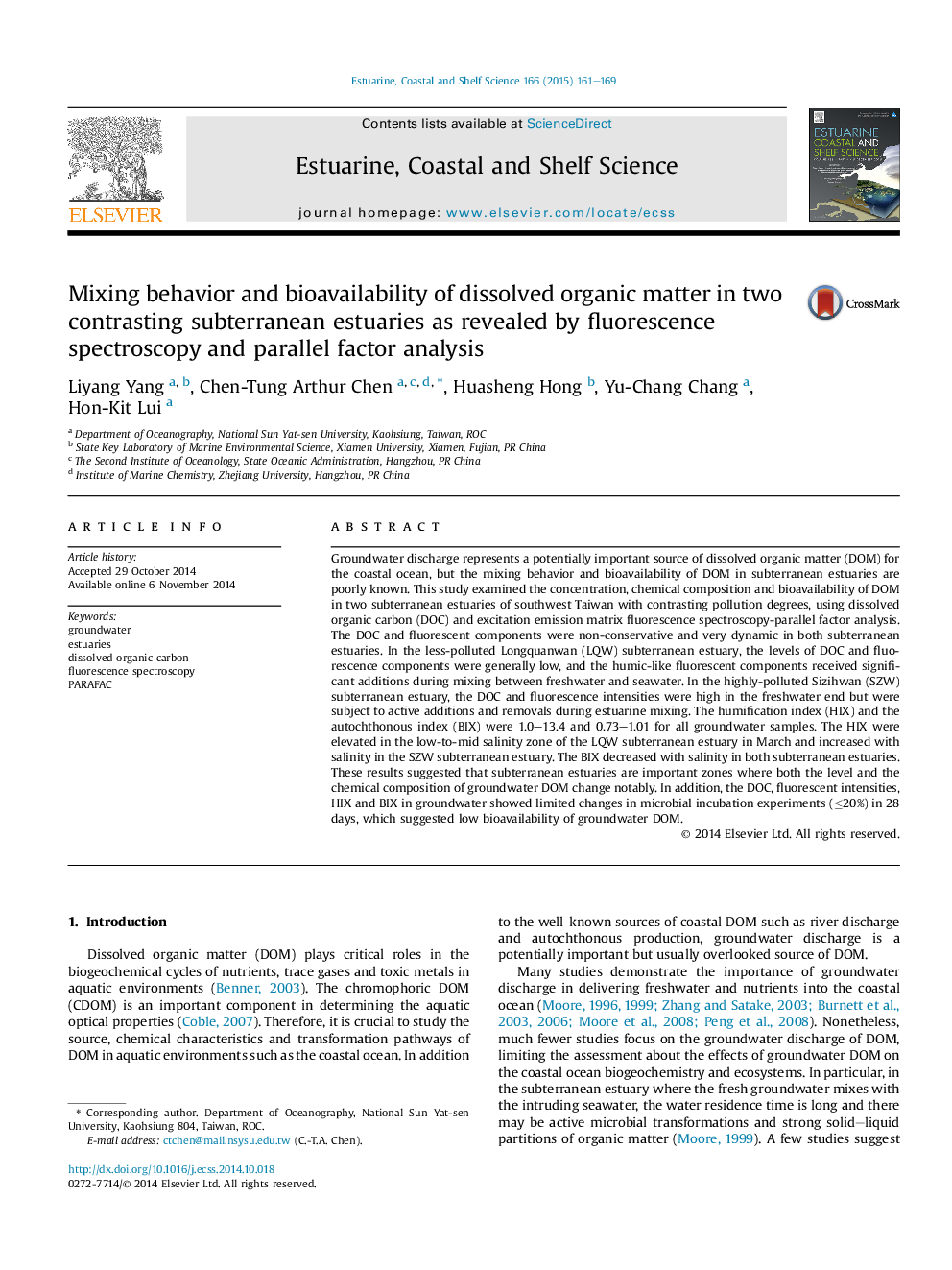| Article ID | Journal | Published Year | Pages | File Type |
|---|---|---|---|---|
| 4539378 | Estuarine, Coastal and Shelf Science | 2015 | 9 Pages |
•Groundwater DOM is highly non-conservative in subterranean estuaries.•The DOM composition is also modified in subterranean estuaries.•Groundwater DOM in the inter-tidal zone has a low bioavailability.•The DOM biogeochemistry is different between surface and subterranean estuaries.
Groundwater discharge represents a potentially important source of dissolved organic matter (DOM) for the coastal ocean, but the mixing behavior and bioavailability of DOM in subterranean estuaries are poorly known. This study examined the concentration, chemical composition and bioavailability of DOM in two subterranean estuaries of southwest Taiwan with contrasting pollution degrees, using dissolved organic carbon (DOC) and excitation emission matrix fluorescence spectroscopy-parallel factor analysis. The DOC and fluorescent components were non-conservative and very dynamic in both subterranean estuaries. In the less-polluted Longquanwan (LQW) subterranean estuary, the levels of DOC and fluorescence components were generally low, and the humic-like fluorescent components received significant additions during mixing between freshwater and seawater. In the highly-polluted Sizihwan (SZW) subterranean estuary, the DOC and fluorescence intensities were high in the freshwater end but were subject to active additions and removals during estuarine mixing. The humification index (HIX) and the autochthonous index (BIX) were 1.0–13.4 and 0.73–1.01 for all groundwater samples. The HIX were elevated in the low-to-mid salinity zone of the LQW subterranean estuary in March and increased with salinity in the SZW subterranean estuary. The BIX decreased with salinity in both subterranean estuaries. These results suggested that subterranean estuaries are important zones where both the level and the chemical composition of groundwater DOM change notably. In addition, the DOC, fluorescent intensities, HIX and BIX in groundwater showed limited changes in microbial incubation experiments (≤20%) in 28 days, which suggested low bioavailability of groundwater DOM.
Graphical abstractFigure optionsDownload full-size imageDownload high-quality image (200 K)Download as PowerPoint slide
